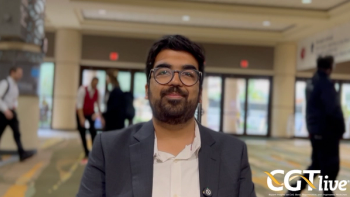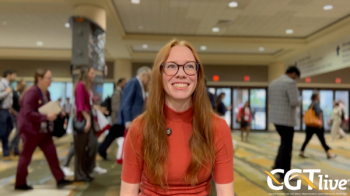
Gene Therapy Improves Cerebral White Matter Microstructures in Patients with AADC Deficiency
New data being presented at ASGCT detail patients (1.67 to 8.42 years of age) enrolled in a study evaluating the investigational gene therapy treatment, AGIL-AADC.
Agilis Biotherapeutics, Inc. has announced that multiple abstracts by its collaborators and partners were selected for presentation at the American Society of Gene and Cell Therapy (ASGCT) this week in Chicago.
One of the abstracts, a platform presentation entitled “
It was demonstrated in the study that bilateral administration of a low dose of AGIL-AADC to the putamen increased dopamine levels.
Both brain magnetic resonance imaging (MRI) and diffusion tensor imaging (DTI) studies were performed in patients before and after 12-months of gene therapy. Using tract-based automatic analysis, white matter tractography was performed for 76 tracts.
Following gene therapy, patients demonstrated noticeable improvements in motor function. Of the 25 children given AGIL-AADC to date, 8 patients, ranging in age from 1.67 years to 8.42 years, were enrolled in this particular study, and white matter in each were evaluated by fractional anisotropy measures via an MRI of the brain.
After gene therapy, total mean fractional anisotropy values increased (p=0.012), representing an improvement in functional white matter structure. All patients improved in motor function.
The data imply that an increase in patients’ motor activity brought on by focal delivery of a gene therapy to the putamen to increase dopamine activity is associated with improvements in the microstructure of white matter tracts throughout the brain involving the motor and premotor cortices, thus supporting clinical improvements.
MRI studies revealed mild dilatation of lateral ventricles, and DTI studies revealed low total (76 tracts) mean tract fractional anisotropy (FA) values before gene therapy. After gene therapy, there was no significant change in MRI, but total mean FA values increased (p=0.012) and the increment was inversely related to age (C.C.=−0.738; p=0.036).
Tract-wise analysis exhibited further developments in right- than left-side tracts, and the right-side tracts that improved included most of the association tracts, corticospinal tracts to the mouth, throat, hand, and toe, thalamic radiation to the motor and premotor cortices, and corpus callosum connecting the motor and premotor cortices.
“Ongoing development of AGIL-AADC remains promising, as we strive to position the gene therapy for registration and commercialization to potentially bring this important, innovative therapy to patients,” said Mark Pykett, President and CEO of Agilis in a
Improvements in the microstructures of white matter tracts involving the motor and premotor cortices were triggered by an increase in motor activity brought by the gene therapy. It’s likely that neuroplasty will be required due to the greater improvement seen in younger patients.
The preferential improvements of the right-side tracts further imply brain motor function laterality.
For more rare disease news from ASGCT and related conferences, subscribe to Rare Disease Report’s
Newsletter
Stay at the forefront of cutting-edge science with CGT—your direct line to expert insights, breakthrough data, and real-time coverage of the latest advancements in cell and gene therapy.

















































